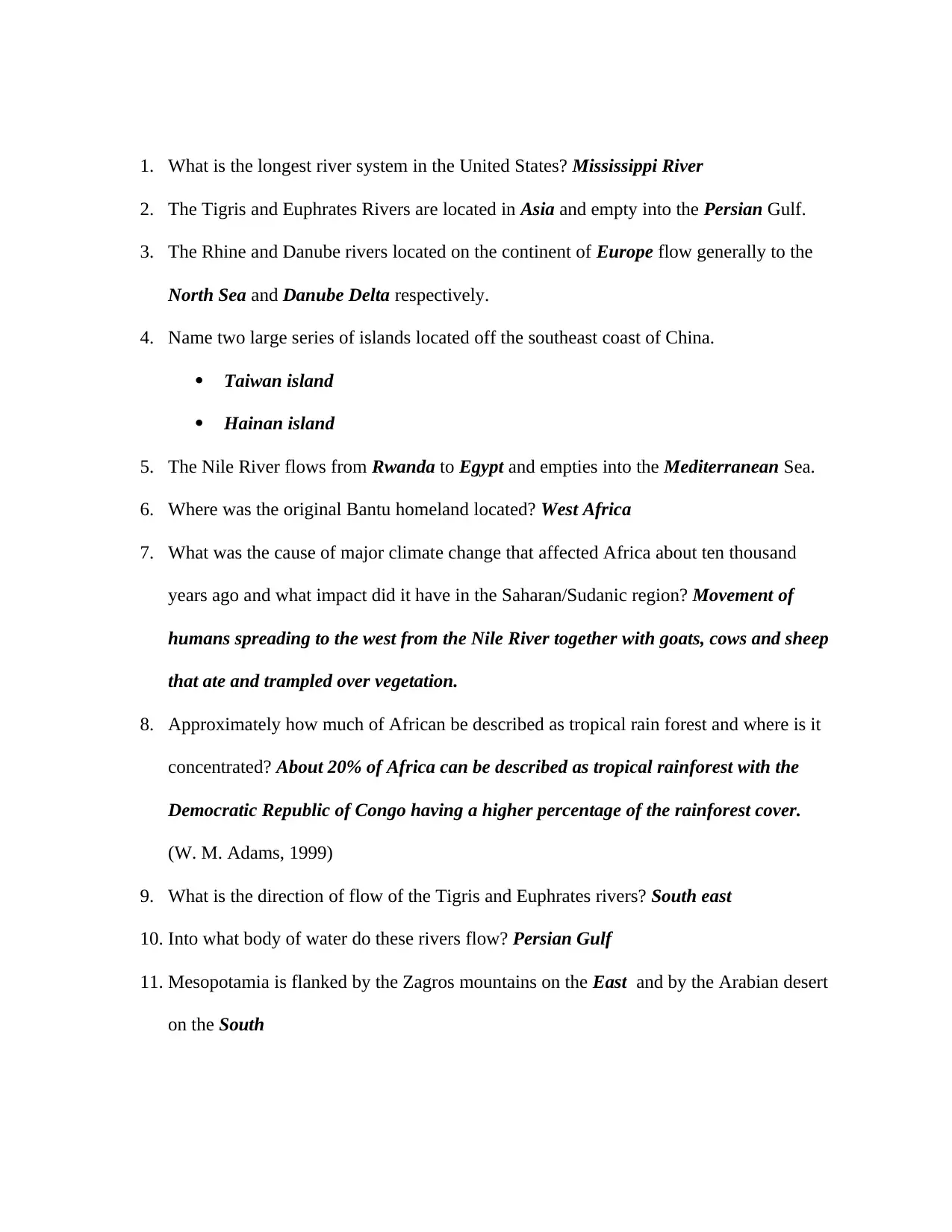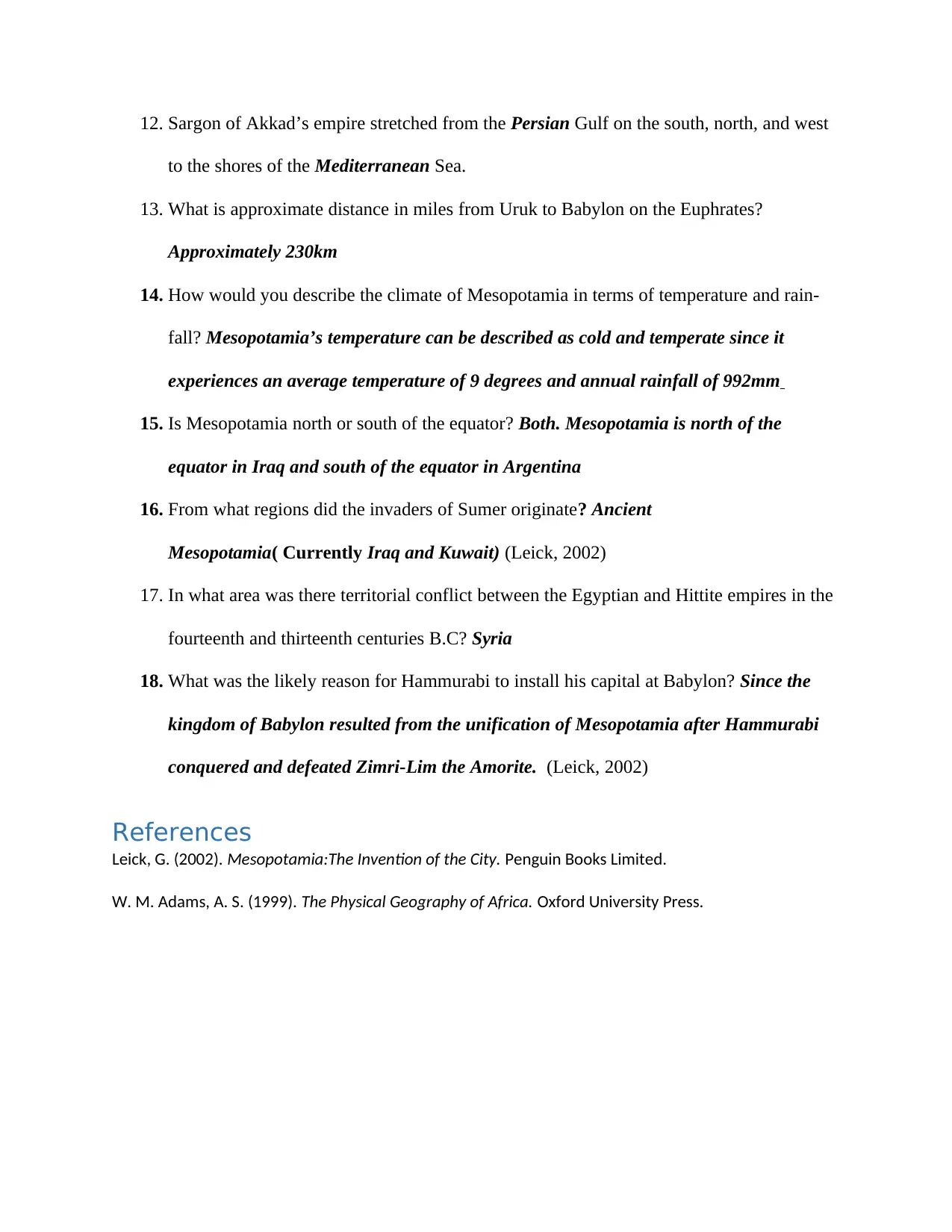Homework: Geography and Its Influence on Ancient Civilizations
VerifiedAdded on 2023/06/03
|2
|512
|289
Homework Assignment
AI Summary
This assignment explores the relationship between geography and the development of ancient civilizations. It covers topics such as major river systems like the Mississippi, Tigris, Euphrates, Rhine, and Nile, and their impact on civilization. It investigates the location of the Bantu homeland and the causes of climate change in Africa ten thousand years ago. Furthermore, it delves into the geography of Mesopotamia, including its climate, location relative to the equator, and surrounding geographical features like the Zagros Mountains and Arabian Desert. The assignment also touches upon historical events such as the extent of Sargon of Akkad's empire and territorial conflicts between the Egyptian and Hittite empires, concluding with the likely reason for Hammurabi's choice of Babylon as his capital. Desklib offers a wealth of similar assignments and study resources for students.
1 out of 2


![[object Object]](/_next/static/media/star-bottom.7253800d.svg)